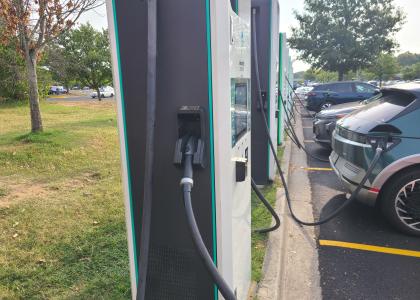The meteoric rise of Property Assessed Clean Energy (PACE) financing over the past few years has been surprising even to those working in clean energy finance. Since its inception in 2009, PACE has enabled $3.3 billion in renewable and energy efficiency investments in people’s homes, $2.8 billion of which occurred in 2016 alone.
The growth of the PACE market has been so remarkable that it’s getting attention outside of the efficiency world as well as inside it. The Wall Street Journal recently published an article calling PACE the “fastest growing loan category.” But in the same article, it ominously compared PACE to the subprime mortgage crisis. If true, this would certainly merit even more attention, this time from regulators and possibly even law enforcement. Fortunately, it’s not.
The pros and cons of PACE
PACE financing smooths out the up-front costs of clean energy investments by paying them out of a capital fund that gets repaid through property taxes. Homeowners and commercial building owners agree to a voluntary tax assessment, and the local government collects the payments on the property tax bill and pays back the PACE financer. The tax assessment offers PACE financers security, which allows them to offer lower rates in return. When it works well, everybody wins.
Although PACE appears to be working well, the tax assessment—PACE’s central feature— makes some people nervous. When homes go into foreclosure, property taxes get paid before mortgages. Since a PACE assessment is part of property taxes, mortgage lenders are concerned that it would leave less money to pay them back in a foreclosure. And since a state or county can force a home into foreclosure if owners don’t pay their taxes, lenders are worried that if someone doesn’t make their PACE payments, the property will go into foreclosure even if the mortgage is up to date.
Dealing with insurers’ concerns
Any time foreclosure enters the conversation, it’s important to be extra careful, because the stakes are high for homeowners. While the Federal Housing Administration (which insures about 17% of the residential mortgage market) is fine insuring homes with PACE assessments on the property, so far at least, Fannie Mae and Freddie Mac (which own or insure 60% of the mortgage market) aren’t.
None of this is lost on other parts of the federal government, the PACE industry, consumer advocates and others. It’s why the Department of Energy has led an effort to bring all of these interests together to develop a set of best practices for the industry. The DOE released the results of that effort in November. The PACE industry has already agreed to subordinate their assessments to primary mortgage loans so that mortgages get paid first in a foreclosure, and the DOE guidelines set out a suite of consumer protection measures for the industry to follow to help ensure that homeowners are treated fairly.
On top of this, in an investment note released this month, the investment research group Morningstar found that PACE assessments pose “no material risk” to mortgages on the properties in question.
Tempest in a Teapot
That brings us back to the story in the Wall Street Journal. The idea that PACE loans could be building towards something like the subprime crisis is simply wrong. First and foremost, the subprime crisis was a crisis because bad and sometimes unethical business practices got people in over their heads with loans that were too large and payments too high for them to afford. It forced tens of thousands of properties into foreclosure every month. People lost their homes.
To date, not a single home has been put into foreclosure because of unpaid PACE assessments. And less than 1% of homes with PACE assessments have gone into foreclosure for any other reason, a lower rate than the market average. There is not even a shadow of the subprime crisis to be seen.
At the same time, the Mortgage Bankers Association (MBA) is also unhappy with PACE. In a recent statement, it called for PACE financing to be reclassified as a mortgage or at least be subject to the same lending requirements as mortgages. The principal issue seems to be that while mortgages are made by mortgage bankers, PACE financing is arranged by home improvement contractors working with PACE financers and local government.
But this points to the reason why PACE assessments should not be treated as mortgages. They are basically home improvement loans. In January, the average mortgage application was $309,000. PACE assessments average closer to $20,000. It’s not a trivial amount of money, but PACE assessments just can’t impose the same kind of financial burden that a bad mortgage can, and the PACE industry is voluntarily adopting more stringent standards than traditional home improvement loans.
The Wall Street Journal was able to find two PACE customers who say they were taken advantage of by unscrupulous contractors. It’s unfortunate that unethical people appear ready to use whatever vehicle they can to defraud people. Like mortgage lenders, the PACE industry would like those people out of its market. But, despite its protections, this industry is likely to see some future stories of bad behavior—as will the mortgage market, which brought us the subprime crisis in the first place
The Larger Story
PACE financing has delivered billions of dollars in clean energy investments for homeowners, creating tens of thousands of jobs and saving hundreds of millions in reduced energy costs.
As a financial vehicle, PACE is performing remarkably well. The great majority of PACE homeowners are making payments on time. There is no evidence of the widespread fraud and economic disaster that mortgage markets saw in the runup to the subprime crisis. Calls to regulate PACE as if there were such evidence seem premature at best.



